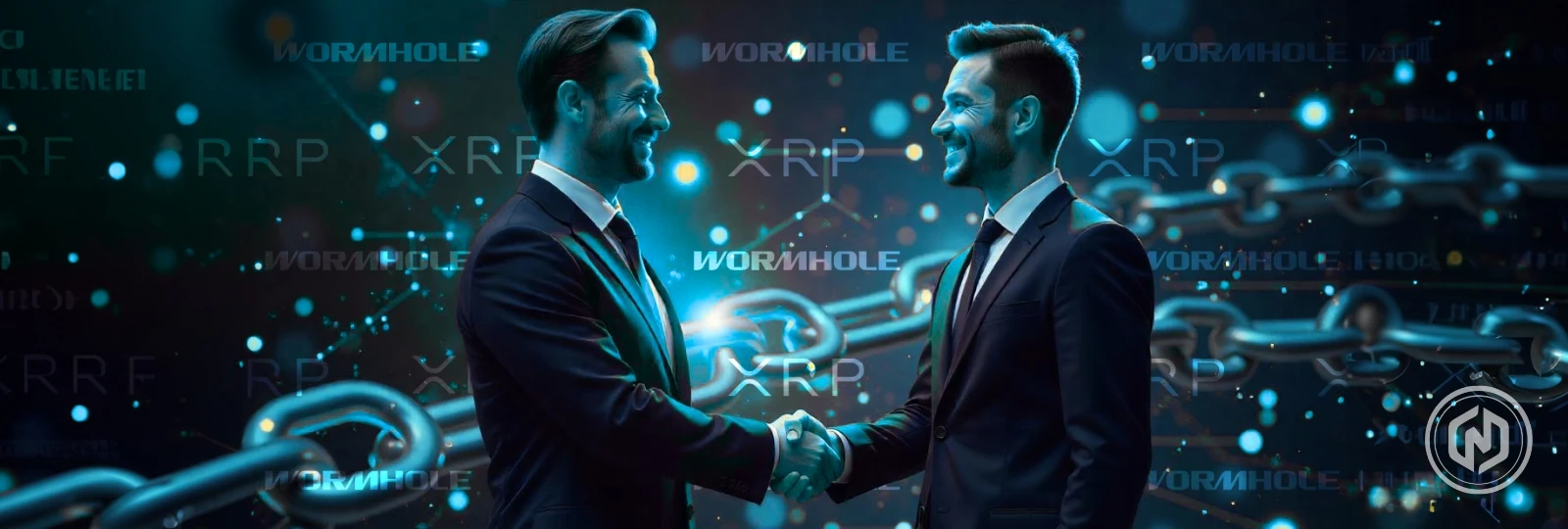- XRPL has coupled Wormhole so that tokens may be transferred across chains.
- The launch of EVM sidechain helps developers by providing support to their familiar tooling.
- Uphold expands USDC to XRPL to be more useful in the real world.
The XRP Ledger (XRPL) is expanding its reach by integrating with Wormhole, a leading cross-chain protocol. This collaboration enhances XRPL’s capacity for multichain functionality and supports Ripple’s ongoing efforts to build infrastructure for institutional finance.
The integration was confirmed on Thursday by Ripple X, which develops XRPL. The alliance is set to bridge XRPL to more than 35 blockchain networks, such as Ethereum and Solana. This initiative boosts interoperability, enabling the seamless movement of tokens and smart contract data between XRPL and other major ecosystems.
Wormhole that facilitates the work of over 200 apps and already serves more than $60 billion of transactions offers an essential service of cross-chain messaging. BlackRock and Apollo are already among the financial giants that use its services. This will ensure the integration is a strategic operation to Ripple because it sets XRPL to be a pillar of onchain finance.
EVM Sidechain and Developer Opportunities Expand to XRPL
The integration extends to both the XRPL mainnet and the forthcoming XRPL EVM sidechain. This sidechain is set to launch in the second quarter of the year and aims to give developers EVM-compatible tools within the XRPL ecosystem.
By combining Wormhole’s infrastructure with XRPL’s low-cost and fast transaction system, developers can now build multichain applications without changing their development environment.
Cross-network payments of assets like XRP, Multi-Purpose Tokens (MPTs), and Issued Assets (IOUs) can now be made, opening up new possibilities in DeFi and tokenization.
The XRPL EVM Sidechain 🤝 @wormhole https://t.co/EOkNd5Pgsc
— Ripple (@Ripple) June 26, 2025
The current update is the latest after XRPL released version 2.5.0, which implemented such features as TokenEscrow, PermissionedDEX, and Batch processing. These upgrades came as a strategy to cope with compliance-oriented financial applications and to increase flexibility of transactions.
RippleX has persuaded validators to use the new version, which needs to have reached the 80 per cent mark of approval within two weeks to become operational.
Uphold likewise revealed that it was supporting USDC on XRPL, such that clients can transfer the stablecoin between Uphold and XRPL wallets. This step further broadens XRPL’s use cases and supports the integration’s push toward practical financial applications.
The integration would represent an important step towards the multichain vision of XRPL, and aid developers and institutions that want to adopt secure and scalable blockchain solutions.



